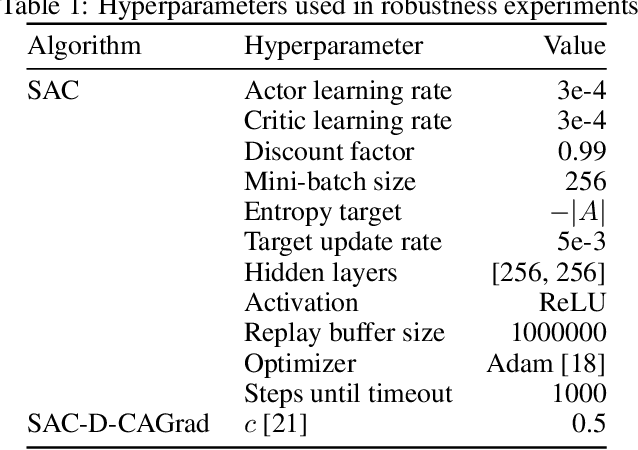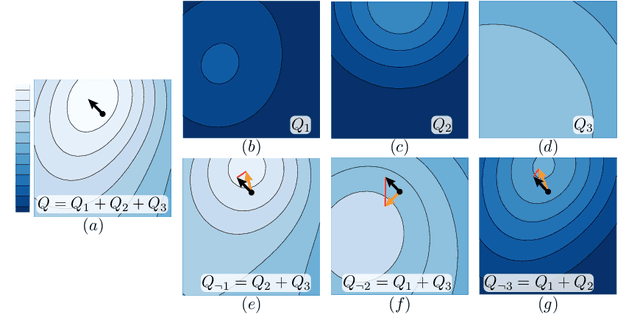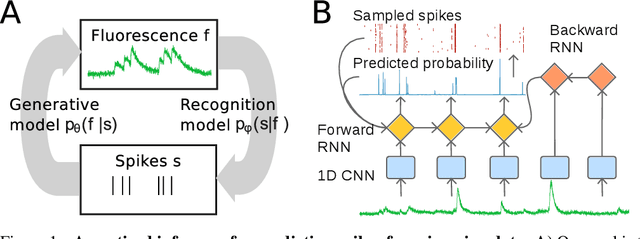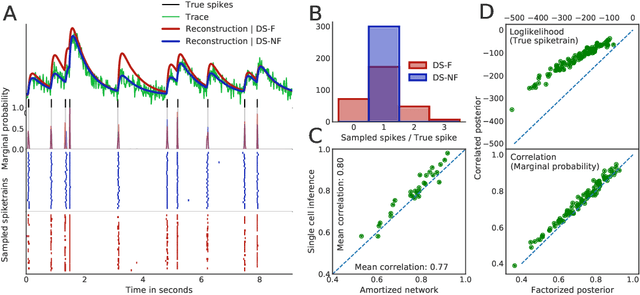Evan Archer
Sony AI
Value Function Decomposition for Iterative Design of Reinforcement Learning Agents
Jun 24, 2022



Abstract:Designing reinforcement learning (RL) agents is typically a difficult process that requires numerous design iterations. Learning can fail for a multitude of reasons, and standard RL methods provide too few tools to provide insight into the exact cause. In this paper, we show how to integrate value decomposition into a broad class of actor-critic algorithms and use it to assist in the iterative agent-design process. Value decomposition separates a reward function into distinct components and learns value estimates for each. These value estimates provide insight into an agent's learning and decision-making process and enable new training methods to mitigate common problems. As a demonstration, we introduce SAC-D, a variant of soft actor-critic (SAC) adapted for value decomposition. SAC-D maintains similar performance to SAC, while learning a larger set of value predictions. We also introduce decomposition-based tools that exploit this information, including a new reward influence metric, which measures each reward component's effect on agent decision-making. Using these tools, we provide several demonstrations of decomposition's use in identifying and addressing problems in the design of both environments and agents. Value decomposition is broadly applicable and easy to incorporate into existing algorithms and workflows, making it a powerful tool in an RL practitioner's toolbox.
Fast amortized inference of neural activity from calcium imaging data with variational autoencoders
Nov 06, 2017



Abstract:Calcium imaging permits optical measurement of neural activity. Since intracellular calcium concentration is an indirect measurement of neural activity, computational tools are necessary to infer the true underlying spiking activity from fluorescence measurements. Bayesian model inversion can be used to solve this problem, but typically requires either computationally expensive MCMC sampling, or faster but approximate maximum-a-posteriori optimization. Here, we introduce a flexible algorithmic framework for fast, efficient and accurate extraction of neural spikes from imaging data. Using the framework of variational autoencoders, we propose to amortize inference by training a deep neural network to perform model inversion efficiently. The recognition network is trained to produce samples from the posterior distribution over spike trains. Once trained, performing inference amounts to a fast single forward pass through the network, without the need for iterative optimization or sampling. We show that amortization can be applied flexibly to a wide range of nonlinear generative models and significantly improves upon the state of the art in computation time, while achieving competitive accuracy. Our framework is also able to represent posterior distributions over spike-trains. We demonstrate the generality of our method by proposing the first probabilistic approach for separating backpropagating action potentials from putative synaptic inputs in calcium imaging of dendritic spines.
Linear dynamical neural population models through nonlinear embeddings
Oct 25, 2016



Abstract:A body of recent work in modeling neural activity focuses on recovering low-dimensional latent features that capture the statistical structure of large-scale neural populations. Most such approaches have focused on linear generative models, where inference is computationally tractable. Here, we propose fLDS, a general class of nonlinear generative models that permits the firing rate of each neuron to vary as an arbitrary smooth function of a latent, linear dynamical state. This extra flexibility allows the model to capture a richer set of neural variability than a purely linear model, but retains an easily visualizable low-dimensional latent space. To fit this class of non-conjugate models we propose a variational inference scheme, along with a novel approximate posterior capable of capturing rich temporal correlations across time. We show that our techniques permit inference in a wide class of generative models.We also show in application to two neural datasets that, compared to state-of-the-art neural population models, fLDS captures a much larger proportion of neural variability with a small number of latent dimensions, providing superior predictive performance and interpretability.
Black box variational inference for state space models
Nov 23, 2015



Abstract:Latent variable time-series models are among the most heavily used tools from machine learning and applied statistics. These models have the advantage of learning latent structure both from noisy observations and from the temporal ordering in the data, where it is assumed that meaningful correlation structure exists across time. A few highly-structured models, such as the linear dynamical system with linear-Gaussian observations, have closed-form inference procedures (e.g. the Kalman Filter), but this case is an exception to the general rule that exact posterior inference in more complex generative models is intractable. Consequently, much work in time-series modeling focuses on approximate inference procedures for one particular class of models. Here, we extend recent developments in stochastic variational inference to develop a `black-box' approximate inference technique for latent variable models with latent dynamical structure. We propose a structured Gaussian variational approximate posterior that carries the same intuition as the standard Kalman filter-smoother but, importantly, permits us to use the same inference approach to approximate the posterior of much more general, nonlinear latent variable generative models. We show that our approach recovers accurate estimates in the case of basic models with closed-form posteriors, and more interestingly performs well in comparison to variational approaches that were designed in a bespoke fashion for specific non-conjugate models.
 Add to Chrome
Add to Chrome Add to Firefox
Add to Firefox Add to Edge
Add to Edge